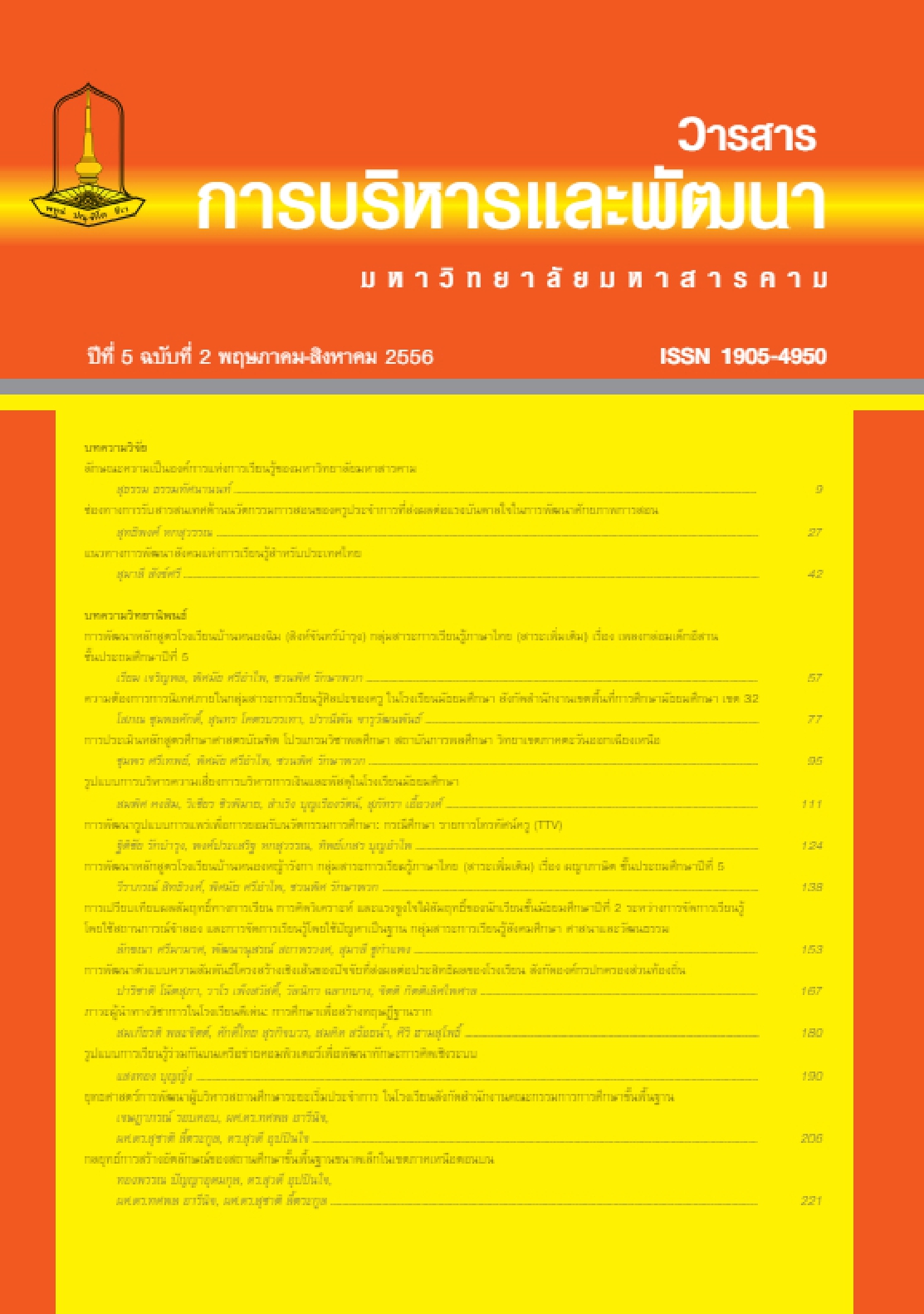Collaborative Computer Network Based Learning Model to enhance System thinking’s Skill.
Main Article Content
Abstract
This article aims to present the Collaborative Computer Network Based Learning Model to enhance System thinking’s Skill (CCNBLEST), for students in higher education. The model was synthesizing from related documents and the researches, then present to the experts (17 persons) for check and revise. The results from synthesis found that: CCNBLEST was composed of 7
learning steps as follow: 1) a subjective orientation 2) acknowledge problems 3) an information absorption 4) enhance the thinking’s skill 5) a small group thinking 6) to used share idea and 7) the last step is student assessment. The environment of mutual learning through computer network. The prominent point of this model is student has a chance to use the information technology in knowledge seeking with teamwork process and enhance system thinking’s skill by thinking and practical training.
Downloads
Article Details
References
Department of Education (2001): Primary Education Programe, B.E.2544. Bangkok: ExpressTransportation Organization of Thailand.
Hannafin, M.J., Hannafin, K.M., Land, S.,& Oliver, K. (1997). Grounded practice and the design of constructivist learning environments. Educational Technology Research and Development. 45(3), 101-117.
Jonassen, D. H., Mayes, J. T., & McAleese, R. (1993). A manifesto for a constructivist approach to technology in higher education.
Kingfah Sinthuwong (2004),Pia Jeh: A Student’ learning and development, Khon Kaen, Faculty of Education, Khon Kaen University.
Kreuzer, J.M.G. Foreword (2001): System Dynamic in Education, System Dynamic, 9, 2 (Summer 1983).
Ministry of University Affair (1997): Higher Education Development Plan: 8th Issue (BE.2540-2544) Srinakharinwirot Research and Development- Journal of Humanities and Social Sciences.10(3): 1-18.
Montri Yaemkasikorn (2002): The improvement of systematic thinking development: Thesis of Doctoral Degree of Education: Graduate School: Srinakharinwirot University.
Panizt T.(1990), “Co-operative versus cooperative leaning: A Comparison of the two concepts which will help us under-stand the underlying nature of interactive learning”.
Prachit Inthakanoke (1998): The comparison of implicit and explicit E-learning affected the secondary school students’ learning achievement in different ways. Thesis of Graduate School, Chulalonkorn University.
Robert, Fisher. (2003). Teaching Thinking. London. Continuum.
Sirikarn Kohsum, (2001) Teaching children to be creative: Bangkok: Tube Publication.
Sararee Chotdilok (2005): The improvement of higher level thinking of secondary school student through the systematic development teaching. Thesis of Doctoral Degree of Education Programe. Chonburi: Graduate School: Burapha University. Bangsaen.
Suphanee Saengsri (2000) The improvement of long-distance teaching in higher educational level. Thesis of Doctoral Degree of Education. Chulalonkorn University. Bangkok.
Titsana Kaemanee (2011): Thinking Innovation. Bangkok: The Master Group Management.


